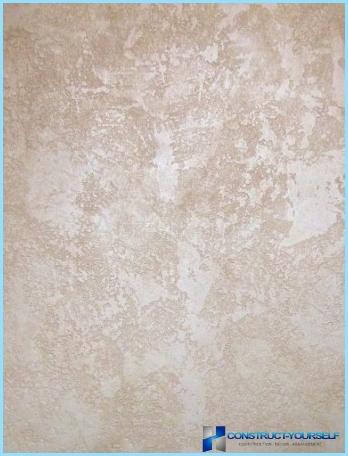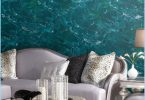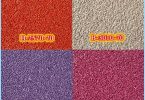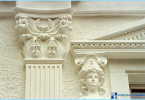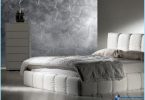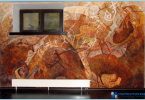The contents
Since ancient times, Venetian plaster was recognized as one of the most difficult types of walls. The cost of this decorative material was so high that to afford its purchase could only be elected. Thanks to the innovations that affected the construction industry, there were high-quality and affordable Italian decorative plaster «Marmorino».
The features of decorative plaster «Marmorino» ↑
This material has become a leader in the global market of finishing materials. The main differences of plaster «Marmorino» from Venice’s mixture, used in Ancient Rome, in application technology and in the composition. Earlier in the plaster mixtures were applied marble dust, which is mixed with lime, getting an analogue of the natural marble.
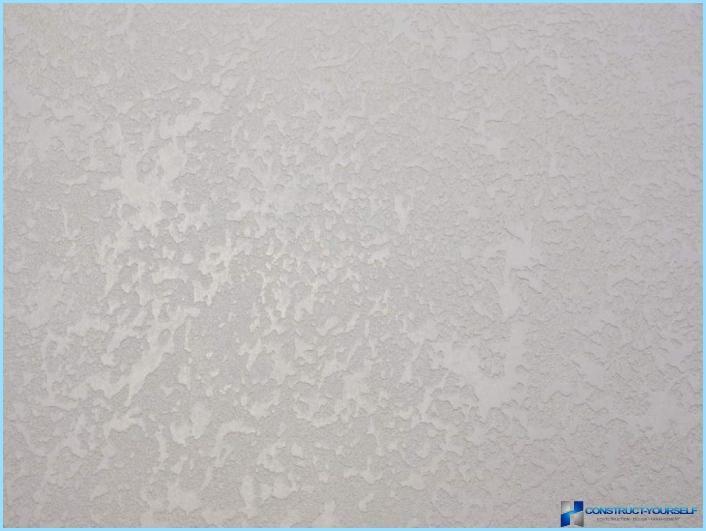
Italian artists applied their drawings directly on wet plaster, creating unique murals, some of which are preserved at present. Today nobody will be surprised with decorative plaster imitating a natural marble. The composition of mixtures it is not, instead of marble used white cement, different stones, and polymer additives.
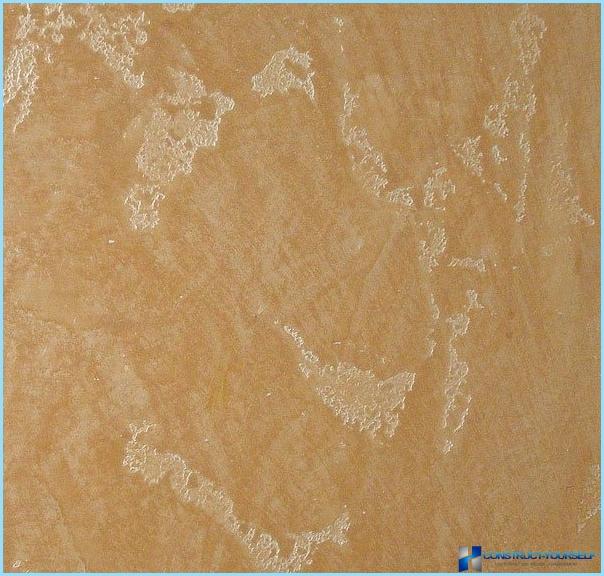
For the simulation applies not only the texture of natural marble, and other materials. Thanks to the development of innovative plaster including decorative plaster «Marmorino», with a huge range of textures and interesting colors, the wall surface stylized natural velvet, expensive wood, silk, natural leather, and also under the concrete. A variant design of the wall using decorative plaster «Marmorino» presented in the video
Product of San Marco ↑
Series «Marmorino» was developed by the company in a wide range, it is possible to create on the walls bulk textured cover.
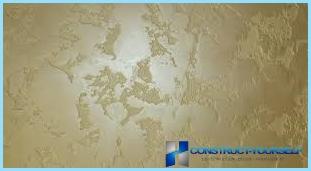
Aesthetic characteristics of the resulting surfaces is much higher than the usual smooth walls, besides more practical inside the premises.
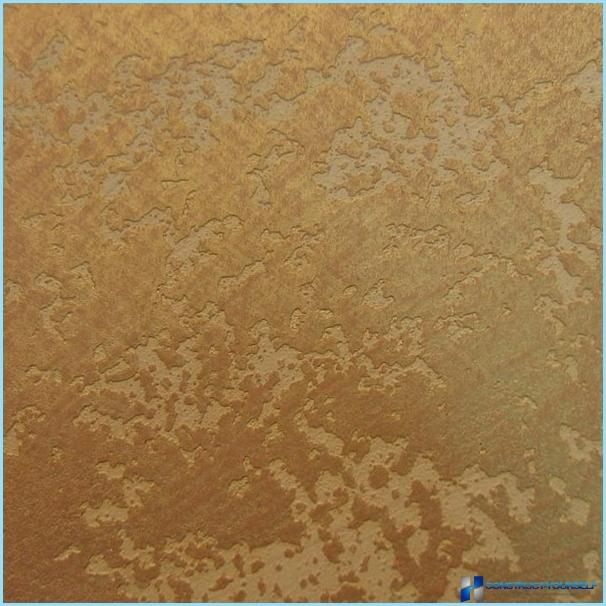
This series is represented by plasters that are white or tinted solutions particular resilience with a special relief obtained due to the presence in the fraction of mineral filler.
The binder in the plaster «Marmorino» are polymeric resins: acrylic or latex, silicone, therefore, the resulting coating has a high resistance to mechanical deformations, moisture. In addition, silicone has a positive effect on the service life of the finished surface, his presence is the guarantee of a substantial increase in the operating period.
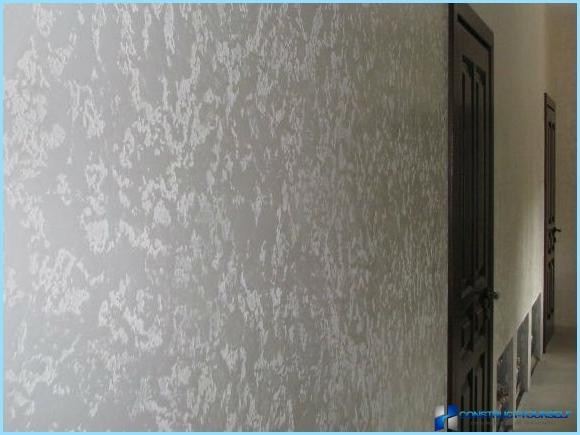
The secrets of interior decorating ↑
Palette of plasters «Marmorino», created by the famous Italian firm of San Marco, allows to obtain a variety of textured coatings. The video presents the features of applying this finishing material
Is it possible to create an imitation of antique wall? In the photo – version of this decoration. Currently, this method of plastering is also in demand as a quality equivalent to natural marble.
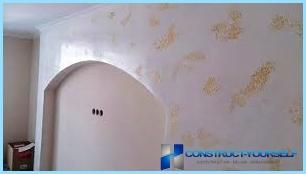
Plaster «Marmorino» was specifically developed to produce a coating which in its texture will be similar to the rough surface of natural stone. This mixture is suitable not only for repairs inside the building, but also for decoration of facades of various buildings. In the resulting coating structure has multiple layers, so the manufacturer offers buyers a set of textured plaster:
- The primer (primer) in the form of colourless substances;
- As the basic component of the proposed dry mixture;
- Translucent coating
All components of the proposed complex direct before use are diluted with water. The manufacturer provides specific instructions for amount of water needed for each component of the mixture. In the photo – the application of plaster of a kind «Marmorino».
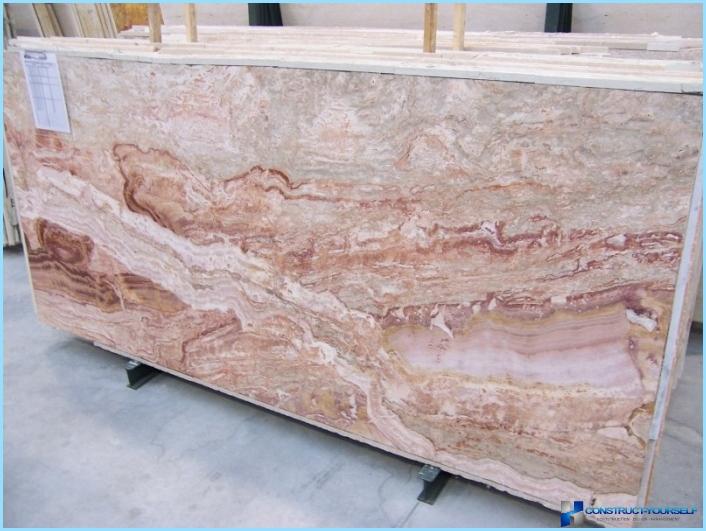
In order to obtain the desired degree of color saturation, selected the combination of the glazing composition and special base.
Substrate preparation ↑
Before commencing plastering of wall, be sure the surface is properly prepared. As a base for plaster mix «Marmorino» you can use the classic plaster screed. To apply Italian plaster mix on a flat concrete or plaster surface.
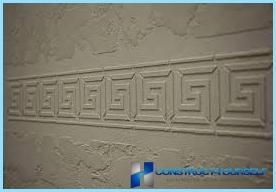
The base should be smooth and even. So after applying Italian plaster mix to achieve the desired result, work should be carried out on dry base, at a temperature not below +10 degrees, humidity not more than 70 percent.
Once the base is sanded, it will remove dust, the surface is covered with primer. It needs to dry for a minimum of seven hours. Then with a trowel to the primed wall is applied an initial base coat, wait for complete solidification of the mixture. The second layer of plaster mixture is applied over the entire surface of the wall, to not have unsightly joints. Until the mixture is dry, it retains its plasticity, therefore, the coupler is formed a certain relief.
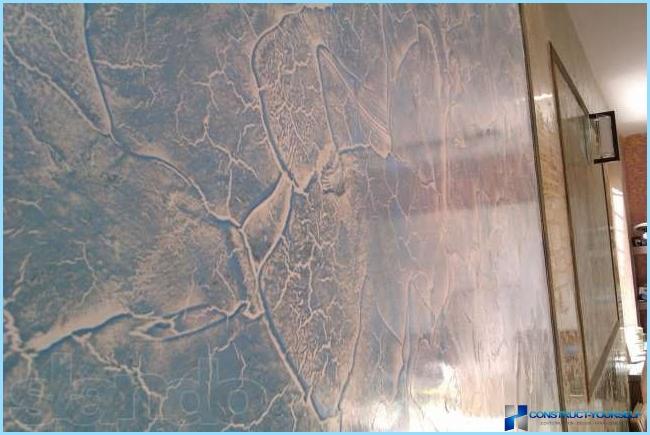
For application of textured plaster «Marmorino» you can use special cushions, a stiff brush, a metal sponge with a normal comb. In the video you can see the method of application of Italian plaster on the wall
After 15-20 minutes, begin smoothing screed, making a glossy surface.
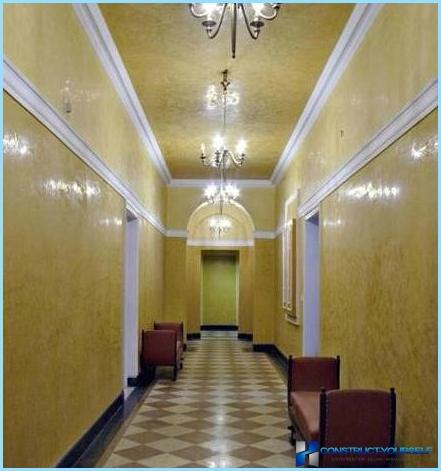
The option to create a texture of marble ^ the
Classic plaster «Marmorino» designed to produce decorative color coating similar to natural marble. This mixture is a ready-made solution, no need to water it down. Need color using a special pigmenting compositions.
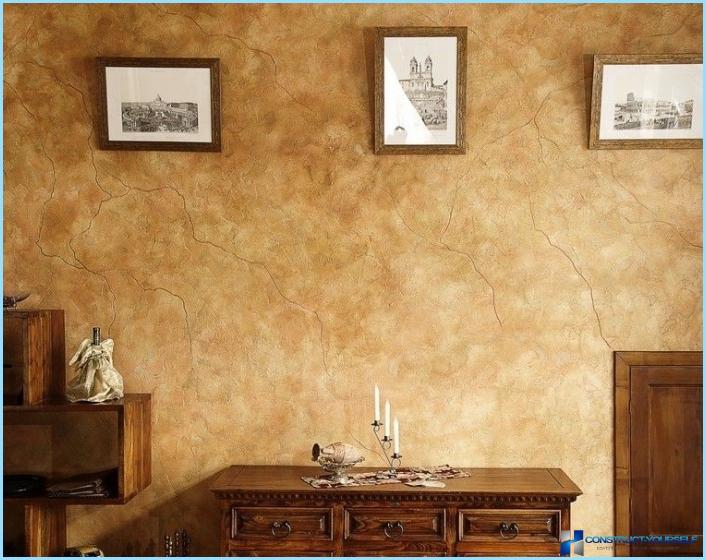
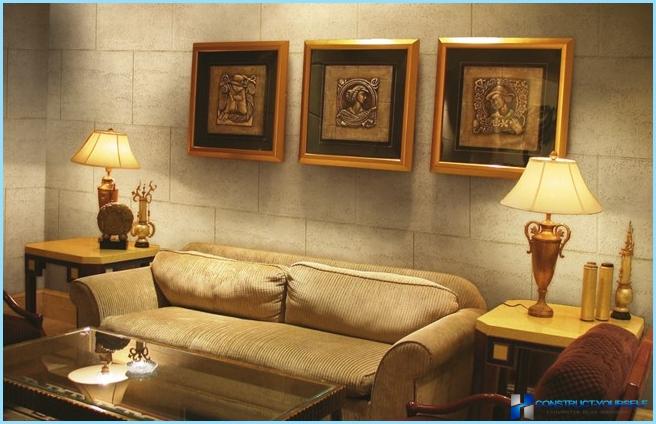
Porous stone» his hands ↑
The most common among consumers are plasters, which are able to give the effect of real concrete or convey the natural structure of the stone. The Italian company San Marco offered his version of the recreate this effect using a special plaster mix «Travertine». The name of this material indicates porosity creation of its structure. Plaster is a dry mixture, which is necessarily present marble chips with a particle size up to 1 mm, the granules of lime, and polymer based. Such a composition contributes to the formation of interesting textures such as travertine. Since the coating has a porous structure, it can be used to disguise minor surface irregularities and roughness on the wall.
For work will require a primer (primer) and a wax topcoat. It is advisable to buy all the components from the same manufacturer, since the mismatch of materials is possible a chemical reaction that will cause exfoliation of the ties.
To simplify the process of applying the plaster mix from the Italian manufacturer, prior to application to the wall, preferably the primer color in the shade close to the selected for the base color.
Before beginning work on the entire surface of the wall, try to make a probe to determine the compliance of the resulting color to the desired, and, if necessary, to be able to add Kohler.
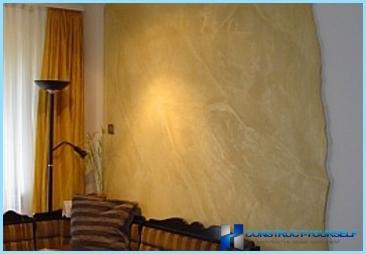
Conclusion ↑
«Marmorino» a decorative material, which you can use to create embossed patterns and reliefs on the surfaces of walls that are used in the interior. The basis of this material is marble flour and acrylic resin, which give the plaster water vapor permeability and plasticity. It is this quality of the mixture «Marmorino» ensures a plurality of reliefs and textures for decorative coatings, makes this material popular among consumers.

